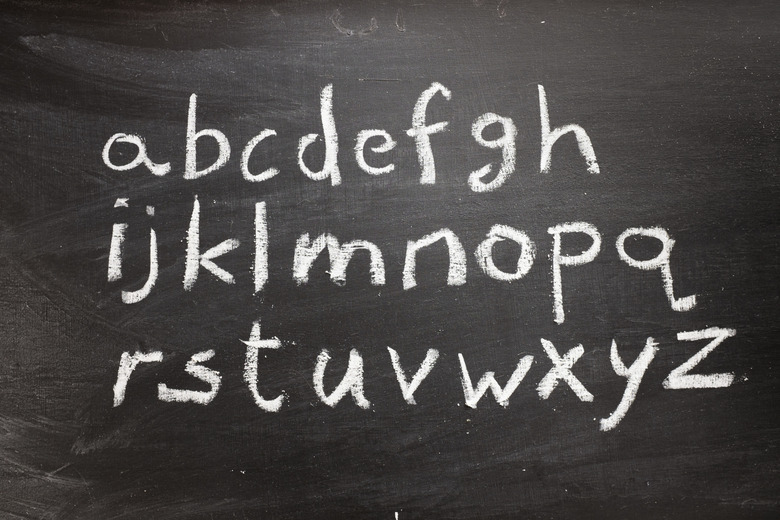How To Write An Algebra Expression
In order to write algebraic expressions successfully, you must have some familiarity with fundamental algebraic operations and key terms. For instance, you must know the significance of a variable, which is a letter that acts as a placeholder for an unknown number. You'll also need to know that the word "constant" refers to a regular number without a variable. Expressions can consist of variables, constants and operating symbols such as plus or minus signs. However, expressions never contain equals signs — adding an equal sign to an expression would turn it into an equation.
Write Algebraic Expressions
Step 1
Choose a letter to use as the variable. You may choose any letter of the alphabet. Write it in lowercase text. For example, suppose you're asked to write an expression for "the sum of twice a number and six." Although any letter works, in this example, an "n" will be used.
Step 2
Determine whether the problem involves a multiplication or division operation. Words like "twice," "thrice," "multiplied," "times" or "product" indicate multiplication, while words like "halved," "divided" or "quotient" indicate division. If the phrasing indicates multiplication, place the variable you selected directly on the right of the designated number. For instance, if continuing with the example "the sum of twice a number and six," you'd write "2n." This is equivalent to "2 x n;" however, the multiplication symbol "x" is typically omitted in algebraic expressions such as this. If the phrasing indicates division, create a fraction with the variable and indicated number. If the example had instead said "the sum of six and the quotient of a number and 2," you'd have written "n/2."
Step 3
Determine whether the problem involves an addition or subtraction operation. Words like "sum", "plus," "added," "more," "increased" and "total" indicated addition. Words like "difference," "minus," "subtracted," "less" and "decreased" indicate subtraction. If the phrasing indicates addition, place a plus sign between the designated variables and constants. In the original example, "the sum of twice a number and six," you would write "2n + 6." If the phrasing indicates subtraction, place a minus sign between the specified variables and constants. For instance, if the original example had instead said "the difference of twice a number and six," you'd have written "2n – 6." When you've accounted for all possible operations, your expression is complete.
Things Needed
- Paper
- Pencil
TL;DR (Too Long; Didn't Read)
You may interchange the order of variables and constants for addition. For instance, 2n + 6 and 6 + 2n are equally correct answers to the original example.
Warning
When writing subtraction and division expressions, place the variables and constants in the exact order in which they're listed in the phrase. For instance, "the quotient of a number and 2" must always be written as "n/2;" it is incorrect to write "2/n." The only exception to this rule is when encountering the word "less" in a subtraction expression. In this case, reverse the order. For example, in "five less than a number," you should write "n – 5," not "5 – n."
Cite This Article
MLA
Harris, Amy. "How To Write An Algebra Expression" sciencing.com, https://www.sciencing.com/write-algebra-expression-4450015/. 24 April 2017.
APA
Harris, Amy. (2017, April 24). How To Write An Algebra Expression. sciencing.com. Retrieved from https://www.sciencing.com/write-algebra-expression-4450015/
Chicago
Harris, Amy. How To Write An Algebra Expression last modified August 30, 2022. https://www.sciencing.com/write-algebra-expression-4450015/
